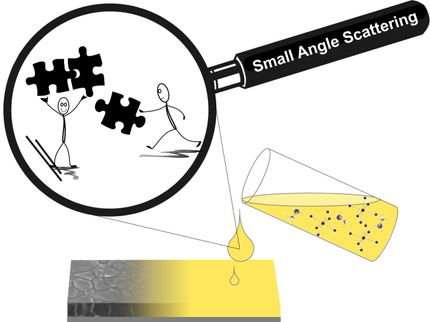A general approach to high-efficiency perovskite solar cells
Advertisement
Researchers from the Institute for Applied Physics (IAP) and the Center for Advancing Electronics Dresden (cfaed) at TU Dresden developed a general methodology for the reproducible fabrication of high efficiency perovskite solar cells.

Perovskite
Christiane Kunath
Perovskites, a class of materials first reported in the early 19th century, were “re-discovered” in 2009 as a possible candidate for power generation via their use in solar cells. Since then, they have taken the photovoltaic (PV) research community by storm, reaching new record efficiencies at an unprecedented pace. This improvement has been so rapid that by 2021, barely more than a decade of research later, they are already achieving performance similar to conventional silicon devices. What makes perovskites especially promising is the manner in which they can be created. Where silicon-based devices are heavy and require high temperatures for fabrication, perovskite devices can be lightweight and formed with minimal energy investiture. It is this combination – high performance and facile fabrication – which has excited the research community.
As the performance of perovskite photovoltaics rocketed upward, left behind were some of the supporting developments needed to make a commercially viable technology. One issue that continues to plague perovskite development is device reproducibility. While some PV devices can be made with the desired level of performance, others made in the exact same manner often have significantly lower efficiencies, puzzling and frustrating the research community.
Recently, researchers from the Emerging Electronic Technologies Group of Prof. Yana Vaynzof have identified that fundamental processes that occur during the perovskite film formation strongly influence the reproducibility of the photovoltaic devices. When depositing the perovskite layer from solution, an antisolvent is dripped onto the perovskite solution to trigger its crystallization. “We found that the duration for which the perovskite was exposed to the antisolvent had a dramatic impact on the final device performance, a variable which had, until now, gone unnoticed in the field.” says Dr. Alexander Taylor, a postdoctoral research associate in the Vaynzof group and the first author on the study. “This is related to the fact that certain antisolvents may at least partly dissolve the precursors of the perovskite layer, thus altering its final composition. Additionally, the miscibility of antisolvents with the perovskite solution solvents influences their efficacy in triggering crystallization."
These results reveal that, as researchers fabricate their PV devices, differences in this antisolvent step could cause the observed irreproducibility in performance. Going further, the authors tested a wide range of potential antisolvents, and showed that by controlling for these phenomena, they could obtain cutting-edge performance from nearly every candidate tested. “By identifying the key antisolvent characteristics that influence the quality of the perovskite active layers, we are also able to predict the optimal processing for new antisolvents, thus eliminating the need for the tedious trial-and-error optimization so common in the field.” adds Dr. Fabian Paulus, leader of the Transport in Hybrid Materials Group at cfaed and a contributor to the study.
“Another important aspect of our study is the fact that we demonstrate how an optimal application of an antisolvent can significantly widen the processibility window of perovskite photovoltaic devices” notes Prof. Vaynzof, who led the work. “Our results offer the perovskite research community valuable insights necessary for the advancement of this promising technology into a commercial product.”





























































